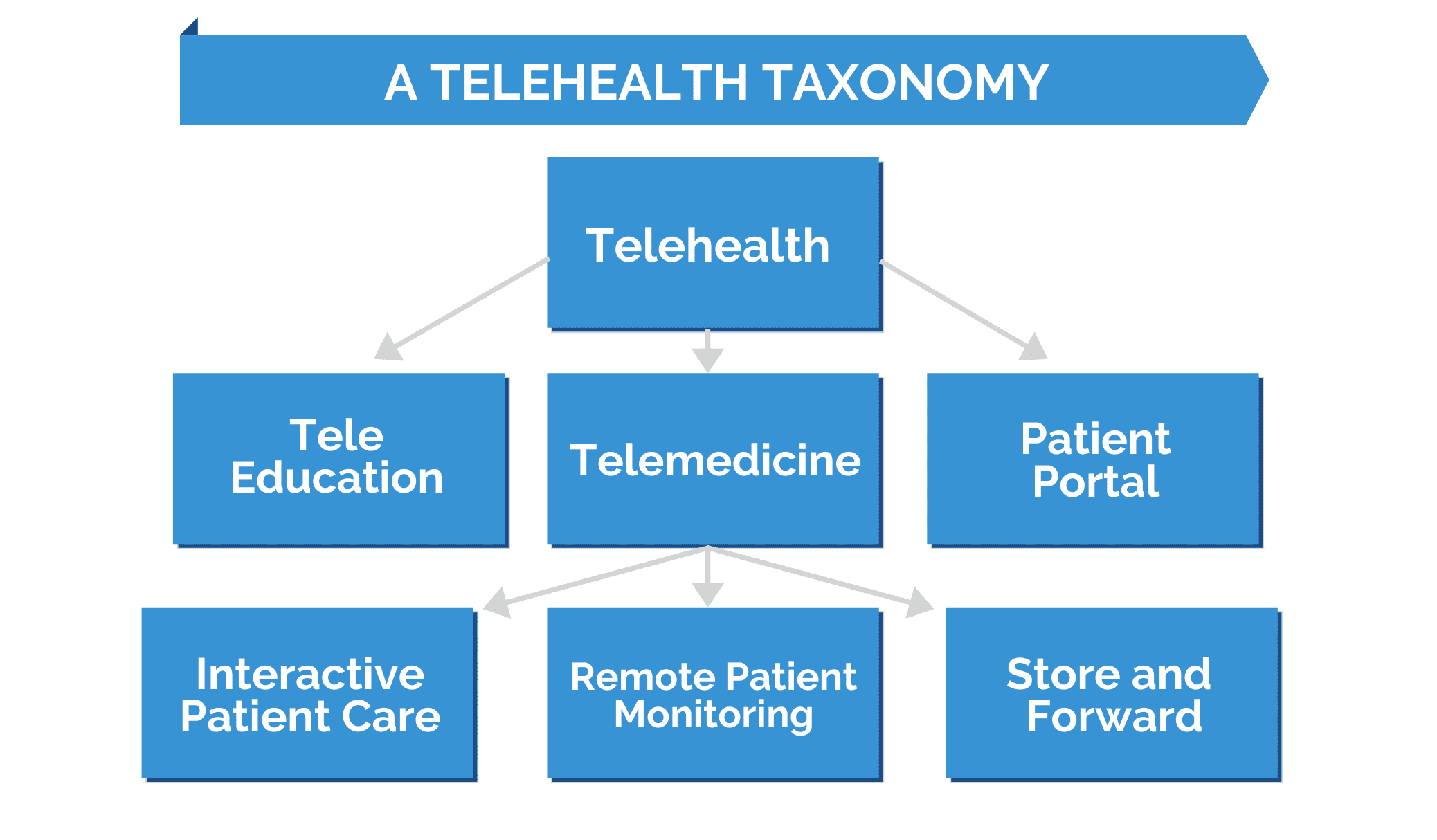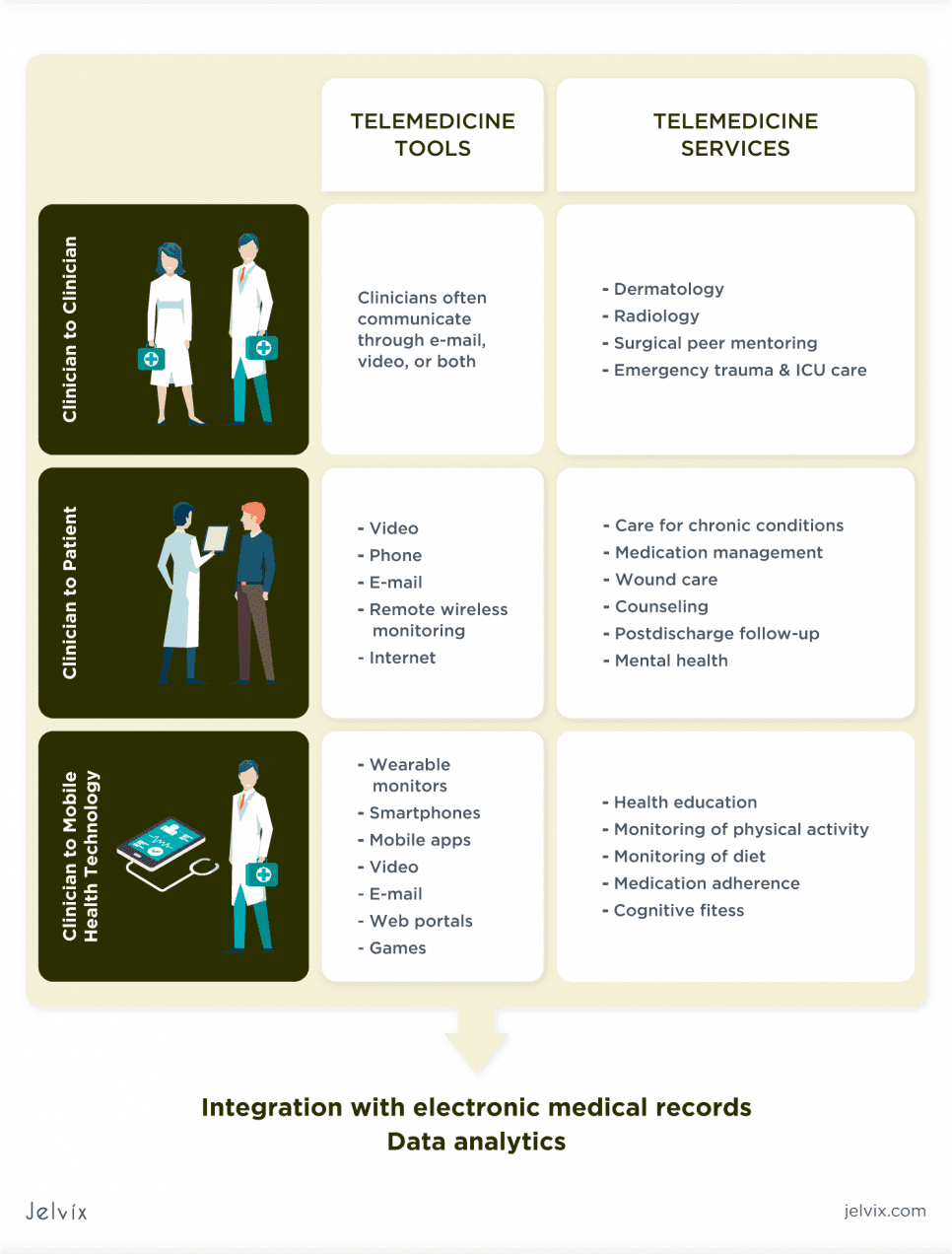Telehealth and telemedicine are individual approaches to administering health services through technology.
In other words, telemedicine falls under the sphere of telehealth. So we can say that telemedicine is telehealth, but telehealth is not telemedicine.
Seems quite confusing!
The merger of the healthcare industry with modern technologies can be puzzling for people as it involves technicalities.
However, modernisation in the healthcare sector is widely adopted. It aims to encourage essential healthcare access for patients and make healthcare management seamless for professionals. It also enhances service delivery efficiency.
People tend to think that telehealth and telemedicine are synonymous with each other. But, there are subtle differences between both. This article explains it.
So, let’s start exploring.
Telehealth and Telemedicine – Brief History
Mordor Intelligence indicates that the global IT healthcare market is anticipated to register a CAGR of 12.5% during 2022-2027.

So how and when modern technology discovers its way into the healthcare industry?
Research shows that telehealth drags out to the 18th century, as was noted by the National Centre for Biotechnology Information.
There are two significant examples of the early acceptance of telehealth.
- As noted in the Lancet article in 1879, the discussion on the potential use of the telephone to mitigate unwanted office visits.
- A magazine showed a doctor checking a patient through a radio while indicating the possibilities of a device usage that enables the patient’s video analysing remotely.
In terms of telemedicine, the earliest foundations were in Europe when in 1905, the Dutch physician Willem Einthoven used the long-distance electrocardiogram transfer.
The first organised telemedicine programs in the US started at the end of the 1950s, as noted by the National Centre for Biotechnology Information.
Telehealth – Quick Glimpse
Telehealth comprises an extensive range of technologies and services that offer care and healthcare facilities at remote locations. It refers to delivering services at a distance like,
- Telemedicine
- Remote patient monitoring
- Non-clinical training
- Provider training
- Administrative meetings
- Health education
- Prescription delivery
- Provider communication
- Health resources and coaching
- Counselling and mental health services
On a hierarchy or a classification, telehealth remains at the top level.

Telemedicine – Quick Glimpse
Telemedicine is a type of telehealth. It is defined as practising medicine at a distance or remotely. Healthcare professionals checking, watching, and treating patients is called telemedicine.
Telemedicine includes,
- Virtual visit
- Specialist consultation
- Medication management
- Chronic disease management
There are three methods through which telemedicine is provided.
|1. RPM (Remote Patient Monitoring)
It refers to periodic/asynchronous/continuous monitoring and transmission of essential signs, including
- Blood pressure
- Glucose levels
- Weight
- Oxygen saturation
- Heart rate and rhythm
Patients use remote patient monitoring services to track their symptoms through Bluetooth biometrics. It monitors symptoms in real-time on healthcare providers’ dashboards or in the EMR.
|2. ICP (Interactive Patient Care)
It refers to live and interactive communication between a patient and provider. It includes,
- Phone consultation
- Video examination
- Secure consults
Patients use ICP (Intracranial pressure) monitoring during the video visit on a mobile, tablet, or for providers directly from the clinical dashboard.
|3. Store and Forward
It refers to the method by which patient information, like lab reports, images, sounds, videos, etc., can be securely sent to healthcare providers in a different location for review.

Telehealth – Substantial Benefits
|1. Mobile Health
Individuals can harness the potential of mobile health by knowing their current health status using mobile applications. mHealth lets patients and specialists provide healthcare and learning materials through mobiles, tablets, home-based computers, and laptops.
It is possible to communicate via WhatsApp, text messages, mobiles, etc. mHealth facilitates services without any location constraints.
|2. Video Consultation
Live video consultation lets the patients connect with doctors effortlessly via video calls to collaborate about anything.
Also, it supports the participation of doctors from different locations to diagnose and deliver the best medication and care available.
|3. Remote Tracking
Remote tracking enables doctors to monitor their patient’s health progress from any location.
Many devices let you track blood pressure, pulse rate, weight, etc. Patients can share those data directly with doctors from anywhere.
It helps doctors to track their patients constantly and treat them with the best health routine.
|4. Cost-savvy
Apart from the infrastructure expenses, clinics, hospitals, and healthcare organisations can mitigate the maintenance expenses of the facilities, and healthcare professionals can provide the best facilities on a global level.
|5. More Access to Rural Areas
If there is an internet connection and mobile availability, virtual healthcare technology delivers the best outcome.
- In rural locations, patients can have access to multiple healthcare professionals.
- When patients can not move and lack a caregiver, they can quickly and easily connect to doctors.
- Time and transportation are concerns for many, but there is a high demand for medical treatment. In such a scenario, patients can collaborate with physicians.
Note: Not everyone understands how to leverage virtual technology, or they do not have access to internet/mobile facilities. There are also possibilities for technical malfunctioning.
Telemedicine – Substantial Benefits
|1. Mitigated risk of Infection
With virtual healthcare facilities, there is no physical interaction between doctors and patients. Hence, there are fewer chances of spreading infections.
|2. Anytime Care Delivery
Telemedicine quickly provides medical services from any location, any time. Patients can leverage the on-the-go visit to doctors whenever feeling sick (even in the middle of the night).
|3. More safety for doctors
Online or virtual interaction between healthcare providers and patients increases the safety of HCPs as there is no face-to-face involvement while diagnosing a patient’s symptoms.
|4. Help chronic diseases patients
Telemedicine is one of the suitable options for chronic disease patients as it lets them avoid physical visits to doctors.
|5. Virtual Psychiatric Assistance
Psychiatric patients get multiple advantages from doctors and hospitals as they get personalised care and speedy recovery.
Note: Telemedicine is not a preferable option in urgent medical treatment. It is suitable to fix symptoms, day-to-day follow-ups, and check-ups. You can not rely on telemedicine amid cardiac arrest, stroke, fracture, etc.
Telehealth vs Telemedicine – Difference
| Telehealth | Telemedicine |
| It covers a broad range of clinical and non-clinical facilities remotely. | Telemedicine is a subset of telehealth. |
| It includes services offered by,HCWs (Healthcare Workers)EducatorsFLWs (Frontline Workers)HCPs (Healthcare Professions) | It includes services offered by healthcare professionals only. |
| Telehealth’s monitoring and collaboration facilities aid chronic disease patients take part in their treatment. | Telemedicine only expands the scope of physician reach. |
| Telehealth is a much broader term than doctor-patient communications. | Telemedicine is limited to doctor-patient communications. |
| Telehealth comprises,Wide-ranging lab test reportsTrainingHealthcare educationInteraction between technology and the healthcare industry | Telemedicine restricts to digital mode of facilities offered by doctors. |
In a Nutshell
The sole difference between telehealth and telemedicine is that telemedicine is all about remote medical facilities, whereas telehealth refers to non-medical and medical facilities.
All telemedicine is telehealth, and all remote patient tracking is telemedicine. Both are crucial for better and expanded quality care access across the spectrum.
With the help of this article, you get clarity on how one is a part of another and how they are distinct. If you still have any doubt, you can contact us anytime. We are keen to help you.
Source: https://www.siliconithub.com/telehealth-vs-telemedicine/



